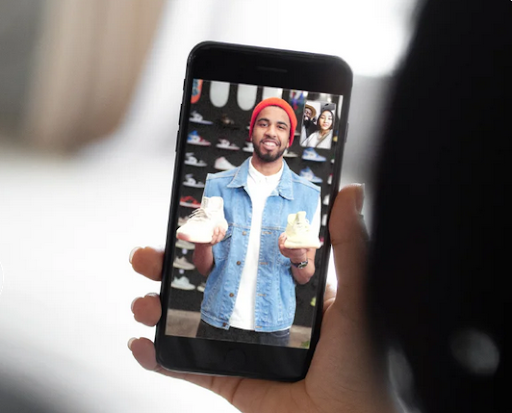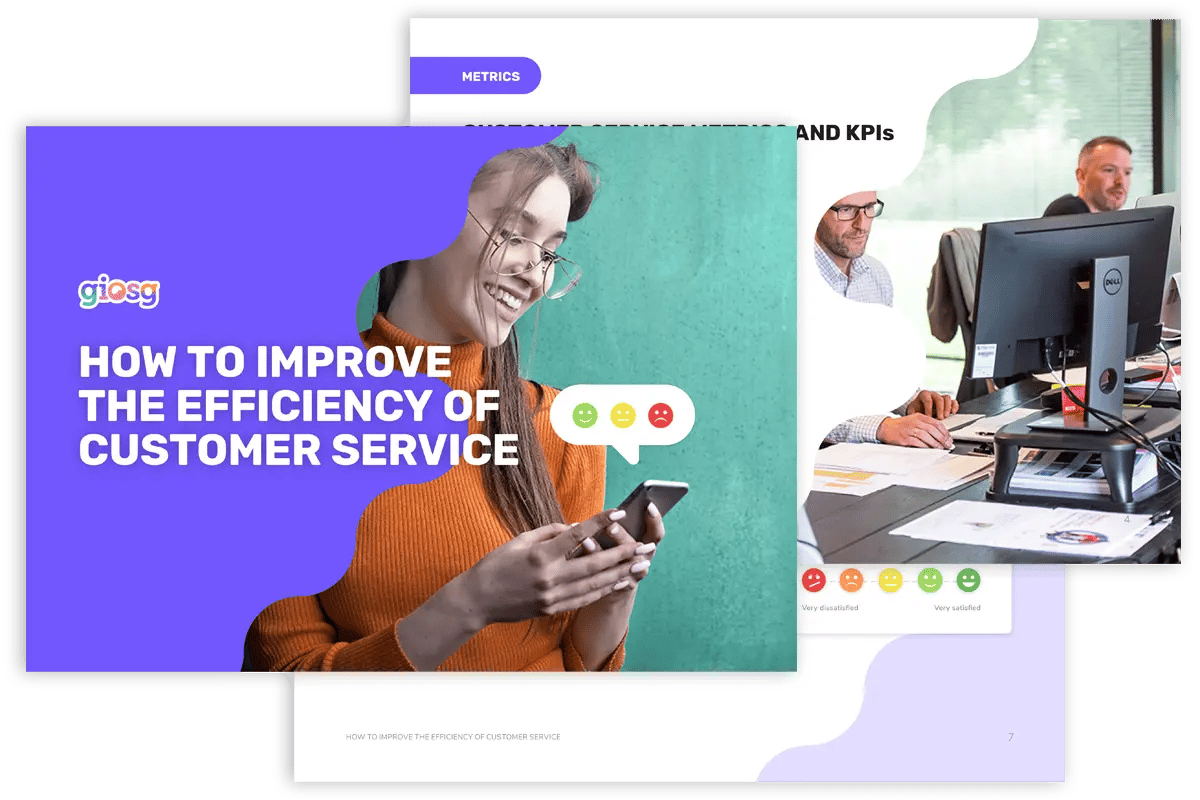Customer engagement and conversions are deeply connected.
Engaged customers form strong and long-lasting relationships with the brand, which leads to increased loyalty and higher conversion rates.
However, consistent growth of a loyal customer base doesn't happen on its own. It's a result of detailed research, planning, and implementation that first provides an excellent customer experience.
This is the foundation for a strategy aimed at generating emotional connections with customers.
Engagement plays an important role in converting customers, building loyalty and trust, and, eventually, increasing sales. For example, in the B2B sector, customer engagement led to a 63% decrease in customer churn.
Read on for eight working strategies that you can try to build engagement.
What is a customer engagement strategy?
Before we go on, let’s get back to basics for a bit. When you are planning a customer engagement strategy, what exactly are you trying to achieve?
Customer engagement is often mixed up with customer satisfaction or customer experience. While connected, these concepts represent different aspects of business-to-customer relations.
Customer engagement is a continuous relationship between a business and a customer that extends beyond a single purchase. Engagement means multiple interactions that lead to higher loyalty and trust that the customer feels towards the business.

Engagement is based on positive customer experience which is a broader concept describing the complete perception of the business by the customer.
Experience includes the impressions the customer gets from each contact with the business – browsing the website, making a purchase, talking to customer service representatives, etc. If the experience meets the customer’s expectations of the brand, it creates customer satisfaction.
Thus, customer experience is what drives both engagement and satisfaction and, eventually, conversions.
Your customer engagement strategy should focus on creating positive experiences. It should plan all customer interactions – before, during, and after the transaction – so that the experience prompts the customer to convert.
The tips below should help you develop an effective customer engagement strategy building strong relationships between the customer and the business.
8 customer engagement strategies to increase conversions
In building your customer engagement strategy, the key thing is to be customer-centric.
Otherwise, you risk losing as many as 88% of your customers. The strategies below put the customer first to ensure ultimate experiences.
1. Analyse data to frame your customer engagement
It's always a good idea to start strategy planning with data analysis. To get a complete picture of your engagement situation, collect the following customer engagement metrics:
- Guest checkout rate. This metric shows the share of customers who complete transactions without creating an account with you. Of course, their engagement level is lower than that of registered customers, so you need to pay special attention to them and take measures to motivate them.
- Repeat purchase rate. Monitor how many customers make more than one purchase with you. These customers are more engaged than those who only buy once, therefore, you will need to plan your strategy to make them continue interactions with you.
- Purchase frequency. This metric shows how often each customer makes transactions with you in a year. A higher rate indicates that your engagement efforts are successful.

In addition, use other methods of gathering customer data. Some tools allow you to monitor their activity on your website and follow their journeys.
When you use certain tools, like live chat software, you can collect customers’ geographic data and keep up with their past interactions with your company. This can also help you in building a working engagement strategy.
2. Collect and process feedback
From feedback, you get insights on all aspects of your performance, customer engagement, and satisfaction, too. There are multiple ways to collect feedback – in a live chat or a survey, from the customer reviews both on your website and independent resources and from social media.
Gather all the feedback you can get your hands on and analyze it to gauge the level of satisfaction your customers are getting. It will show you your weak spots and suggest ways of improvement.
3. Personalise interactions
Today, it’s all about personalization. It is the only way to make yourself noticed.
Look in your email inbox.
Do you see dozens of promotional emails that land there every day? Honestly, how many of them remain unopened and eventually end up in the trash can?
The same can happen to other non-personalized attempts at customer interactions. To succeed, however, you need to make the customer feel special, to show them that they are getting a unique offer tailored to their needs.
What can you do to personalize your customer interactions? There's a variety of tech solutions that can take your customer relations to the next level:
- Chatbots. These pieces of software simulating human conversations can create personalized experiences for customers. Strategically placed along the customer’s journey, they come close to becoming a personal assistant who can provide help whenever needed. Built to accommodate user requirements and business specifics, chatbots play an important role in increasing engagement.
- Live chat. Similar to a chatbot, live chat is a place for customers to get assistance as they interact with your business. The difference is that live chat is operated by human agents who are ready to help whenever it's needed.
- One-on-one videos. Video shopping is becoming a hot new trend in commerce. It uses video streaming technology to hold live shopping sessions with customers. During such one-on-one video interactions, customers get personal professional assistance from expert consultants.

4. Keep customers in orbit with valuable content
Content marketing is not going anywhere, and you can use it to boost engagement, too. However, if you are focusing on getting more engaged customers and, eventually, conversions, produce not just any typical content.
Your content should not be a one-way street. It should be interactive content that prompts a response from your audience and spark their interest. Consider the following content formats:
- Polls and surveys
- Quizzes
- Games and gamification elements
- Contests
- “Ask me anything” sessions
- Raffles for sharing your content
- Live video sessions
- Video bots or shoppable videos
- User-generated content
Your possibilities are virtually unlimited. Depending on your line of business, you can ask users to show how they are using your product, create unboxing videos, share reviews, and test their knowledge of your product. The main thing is to start an interaction and provide valuable information in the process.
5. Provide special offers to loyal customers
According to 82% of businesses, it's less expensive to retain customers than to bring in new ones. Thus, when planning your customer engagement strategy, you need to include measures aimed at maintaining customer loyalty.
How can you increase loyalty? You can choose from a number of options or try to incorporate several of them at the same time:
- Introduce a loyalty program with points, bonuses, special discounts, or offers for loyal customers.
- Encourage referrals by offering awards for new customers
- Send personalised messages thanking customers for being loyal and offering small gifts such as beautiful personalized photo books or special discounts.
- Greet customers on important personal dates, such as birthdays or anniversaries with you.
6. Take a social approach
Your social media pages are a place to monitor your customers’ opinions on your product and your brand as a whole. At the same time, social media can become an engagement-boosting resource.
Make sure you monitor your social accounts regularly and establish a continuous presence of your brand on social media. Make sure to grow your following, respond to comments, answer questions, and provide information. This way, your customers will expect new information to appear on your page frequently and will take steps not to miss it.

You can promote your social media accounts directly on your website through pop-ups that invite visitors to subscribe and follow you on social networks.
You won't regret focusing on social commerce strategies.
7. Optimise your website for mobile
Did you know that 76% of customers do their shopping on mobile devices? Mobile shopping is turning out to be quicker, easier, and just as secure as any other form of shopping.
To reach the highest number of customers and engage them, you need to make mobile shopping convenient. Optimise your website for use on mobile devices by:
- Using responsive design and themes.
- Avoiding features that do not render well on mobile platforms (Flash elements, annoying pop-ups, sidebars, etc.).
- Using videos rather than images.
- Making checkout smooth and quick by reducing the scope of the required information.

8. Empower your customer experience team
A CX team consists of professionals who manage and monitor everything related to customer experience in your company – market research, customer feedback, and customer journeys. They design processes and procedures to ensure the most positive customer experience and research ways to improve it even further.
There may not be a dedicated CX team in your company, but keep in mind that anyone who deals with the creation or analysis of customer experience could be considered a member of such a team
To achieve maximum effectiveness, your CX team – and, maybe, all other teams, too – should be empowered to make correct decisions and act to provide the ultimate level of service.
Empowerment has many aspects:
- Independence and absence of micro-management
- Training and mentorship
- Trust between team management and members
- Encouragement of feedback
- Advanced tools and automation solutions optimising everyday workflows
Bottom line
“Failing to plan is planning to fail” – this saying applies to any strategy, customer engagement included. If you are determined to build a working engagement strategy where everything is under control, spend some time planning and preparing.
Want to learn more about how to enhance customer experience? Download our free guide "The How-to Guide for Customer Service Efficiency."
